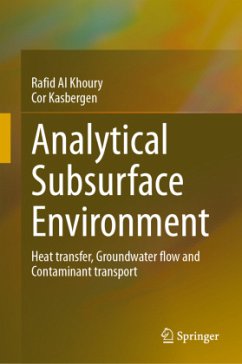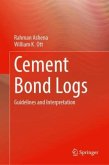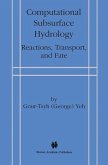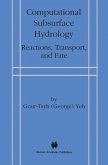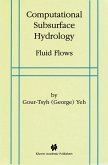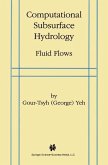The Essential Guide to Analytical Problem-Solving in Applied Sciences
This textbook offers a wealth of analytical solutions to engineering and applied sciences problems, with a primary focus on heat transfer, groundwater flow, and contaminant transport in shallow subsurface environments. It emphasizes a deeper understanding of the mathematical framework underlying physical processes, inspiring an appreciation for the power and elegance of analytical modeling. Whether you are a student, instructor, researcher, or professional, this resource delivers the clarity and tools necessary to address ambiguities in existing models and unlock the methods to solving complex boundary value problems.
Key Features
1. Step-by-Step Mathematical Solutions
With clear, methodical explanations, this textbook breaks down complex boundary value problems, making them approachable even for readers without advanced mathematical background. It equips learners at all levels to master simulating physical problems using accessible programming tools such as MATLAB, Python, Maple, and Fortran.
2. Fourier Method
This textbook employs the Fourier method, an elegant mathematical approach to solving boundary value problems. By utilizing eigenfunction expansion and the fast Fourier transform (FFT), it provides a simpler and more traceable alternative to the intricate inverse Laplace transform. In particular, the FFT s capability to address random time-dependent boundary conditions broadens its applicability far beyond conventional analytical techniques.
3.
This textbook offers a wealth of analytical solutions to engineering and applied sciences problems, with a primary focus on heat transfer, groundwater flow, and contaminant transport in shallow subsurface environments. It emphasizes a deeper understanding of the mathematical framework underlying physical processes, inspiring an appreciation for the power and elegance of analytical modeling. Whether you are a student, instructor, researcher, or professional, this resource delivers the clarity and tools necessary to address ambiguities in existing models and unlock the methods to solving complex boundary value problems.
Key Features
1. Step-by-Step Mathematical Solutions
With clear, methodical explanations, this textbook breaks down complex boundary value problems, making them approachable even for readers without advanced mathematical background. It equips learners at all levels to master simulating physical problems using accessible programming tools such as MATLAB, Python, Maple, and Fortran.
2. Fourier Method
This textbook employs the Fourier method, an elegant mathematical approach to solving boundary value problems. By utilizing eigenfunction expansion and the fast Fourier transform (FFT), it provides a simpler and more traceable alternative to the intricate inverse Laplace transform. In particular, the FFT s capability to address random time-dependent boundary conditions broadens its applicability far beyond conventional analytical techniques.
3.

